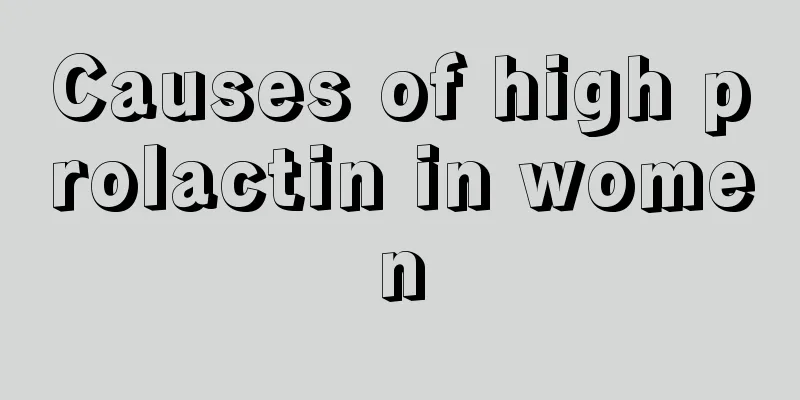Cystic dark areas on ovaries

|
The ovaries are one of the important parts of women. In fact, polycystic ovary syndrome is a relatively common disease in women. If people say there are cystic dark areas on the ovaries, people may not fully understand what this is. In fact, cystic dark areas in the ovaries are polycystic ovary syndrome. There are many dangers of polycystic ovary syndrome. Let me introduce it to you below. 1. Non-genetic theory of PCOS Studies have shown that the hormonal environment in the uterus during pregnancy affects the endocrine state of the individual in adulthood. Exposure to high-concentration androgen environments during pregnancy, such as mothers with a history of PCOS or mothers with congenital adrenal hyperplasia and poorly controlled hyperandrogenism, can easily lead to ovulatory dysfunction after puberty. 2. PCOS Genetics Theory The main basis of this theory is that PCOS tends to run in families. Familial ovulatory dysfunction and polycystic ovarian changes suggest that the disease has a genetic basis. Hyperandrogenism and/or hyperinsulinemia may be genetic characteristics that PCOS family members also suffer from. The effect of insulin in promoting ovarian androgen production is also affected by genetic factors or genetic susceptibility. Family members with oligoovulation, hyperandrogenism, and polycystic ovaries have an increased prevalence of hyperinsulinemia in women and premature hair loss in men. Cytogenetic studies have shown that PCOS may be inherited in an X-linked recessive, autosomal dominant or polygenic manner. Through whole genome scanning, the largest number of genetic genes related to PCOS were discovered, such as candidate genes for steroid hormone synthesis and related functions, androgen synthesis-related regulatory genes, insulin synthesis-related genes, carbohydrate metabolism and energy balance candidate genes, gonadotropin function and regulation candidate genes, adipose tissue-related genes, and chronic inflammation-related genes. In short, the etiology research of PCOS cannot confirm that the disease is caused by a certain gene site or a certain gene mutation. Its onset may be related to the action of some genes under the influence of specific environmental factors, leading to the occurrence of the disease. 1. Menstrual disorders PCOS causes anovulation or infrequent ovulation in patients, and about 70% of them have menstrual disorders. The main clinical manifestations are amenorrhea, oligomenorrhea and dysfunctional uterine bleeding, accounting for 70% to 80% of women with abnormal menstruation, 30% of secondary amenorrhea, and 85% of anovulatory dysfunctional uterine bleeding. Due to the ovulation dysfunction and lack of cyclical progesterone secretion in PCOS patients, the endometrium is under simple high estrogen stimulation for a long time. The continuous proliferation of the endometrium is prone to simple endometrial hyperplasia, abnormal hyperplasia, and even atypical endometrial hyperplasia and endometrial cancer. |
<<: Ovarian hematoma is caused by
>>: Female left lower back pain
Recommend
Stomach discomfort during pregnancy
Many pregnant mothers always feel stomach discomf...
Chemotherapy, radiotherapy or surgery? A comprehensive guide to treating optic pathway glioma in children
Author: Tian Yongji, Chief Physician, Beijing Tia...
Can empty follicles be detected by ultrasound?
Empty follicles are a relatively abnormal conditi...
Eat steamed apples when you have diarrhea during breastfeeding
During breastfeeding, what the mother eats will d...
What causes breast swelling and enlargement?
Whether men or women, they are usually very conce...
Postpartum farts are very smelly
Farting after childbirth is a particularly troubl...
Does breast nodule level 3 require surgery?
Breast nodules are very common. Many women will b...
Women have stomach pain and nausea
Stomach pain often occurs in daily life, and some...
Why didn't it hurt the first time?
In ancient times, people attached great importanc...
How to self-diagnose ovulation
If a couple has intercourse during the ovulation ...
Is there any benefit to washing your vagina with salt water?
Salt water has many uses in life. For example, us...
Treatment of bilateral fallopian tube adhesions
Bilateral fallopian tube adhesion is a very serio...
What to do if you have a fever while preparing for pregnancy
Many married couples have their own plans for whe...
Symptoms of breast hyperplasia in early pregnancy
Women will experience many uncomfortable symptoms...
There is gray-brown color below when menstruation is not coming
The menstruation of a normal person should be bri...









